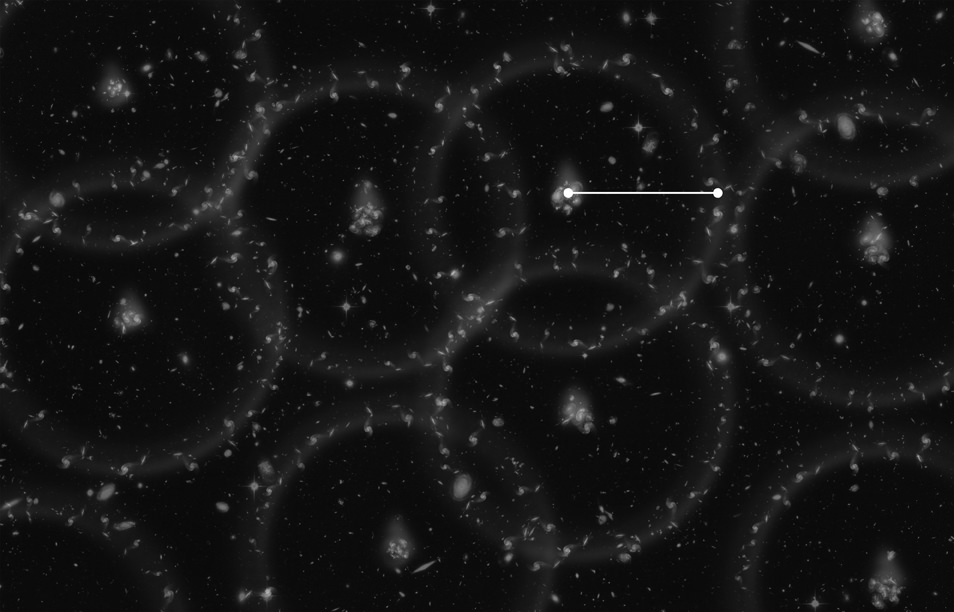In this series we are exploring the weird and wonderful world of astronomy jargon! Listen carefully for today’s topic: baryon acoustic oscillations!
The early universe was a pretty intense place. So intense that it was a plasma, which is a fancy physics word for a high-energy soup of particles and radiation. And like any other soup, high-energy or otherwise, there can be sound waves.
Sound waves are just waves of pressure traveling from one place to another, and the early universe was a thunderous cacophony. Sound waves of all sorts of different strengths and intensities crashed everywhere.
And then one day, the music stopped.
When our universe was about 380,000 years old, the plasma cooled enough to…well, stop being a plasma. Atoms formed, the radiation went free, and honestly the universe was never really all that interesting ever since. At that moment, the sound waves bouncing around got stuck, frozen in place.
Since sound waves are just waves of pressure and density, that meant that there were some regions of the universe with slightly higher density than average, and some places with slightly lower density than average. These differences weren’t very big, but fast forward a few billion years and something interesting shows up.
Something called baryon acoustic oscillations.
“Acoustic oscillation” is just another way to say “sound wave”, and the “baryon” part refers to the normal matter in the universe. Those early sound waves left a fingerprint in the arrangements of galaxies in the present-day universe, something that galaxy surveys are able to detect.
If you start at any random galaxy and build a map of how many galaxies are at a given distance, you’ll find something strange at the distance of about 150 megaparsecs. There are more galaxies at that distance than there should be. That’s the relic, the fingerprint, of those early sound waves, still alive and rocking even today (just not as loud).

